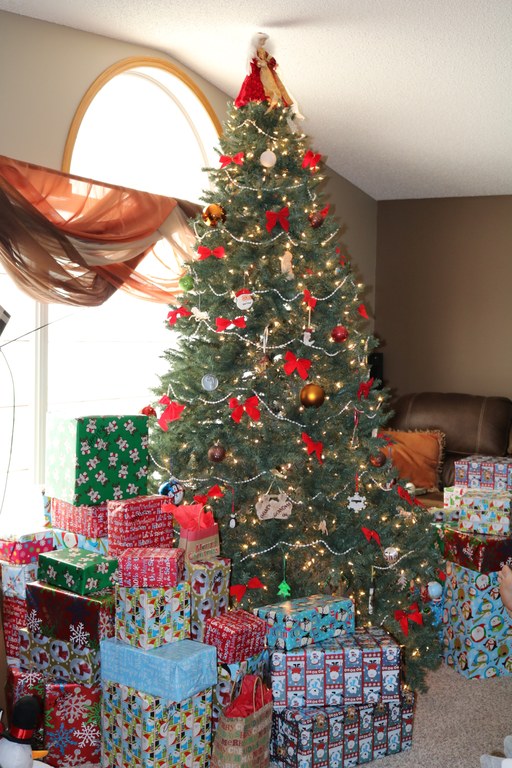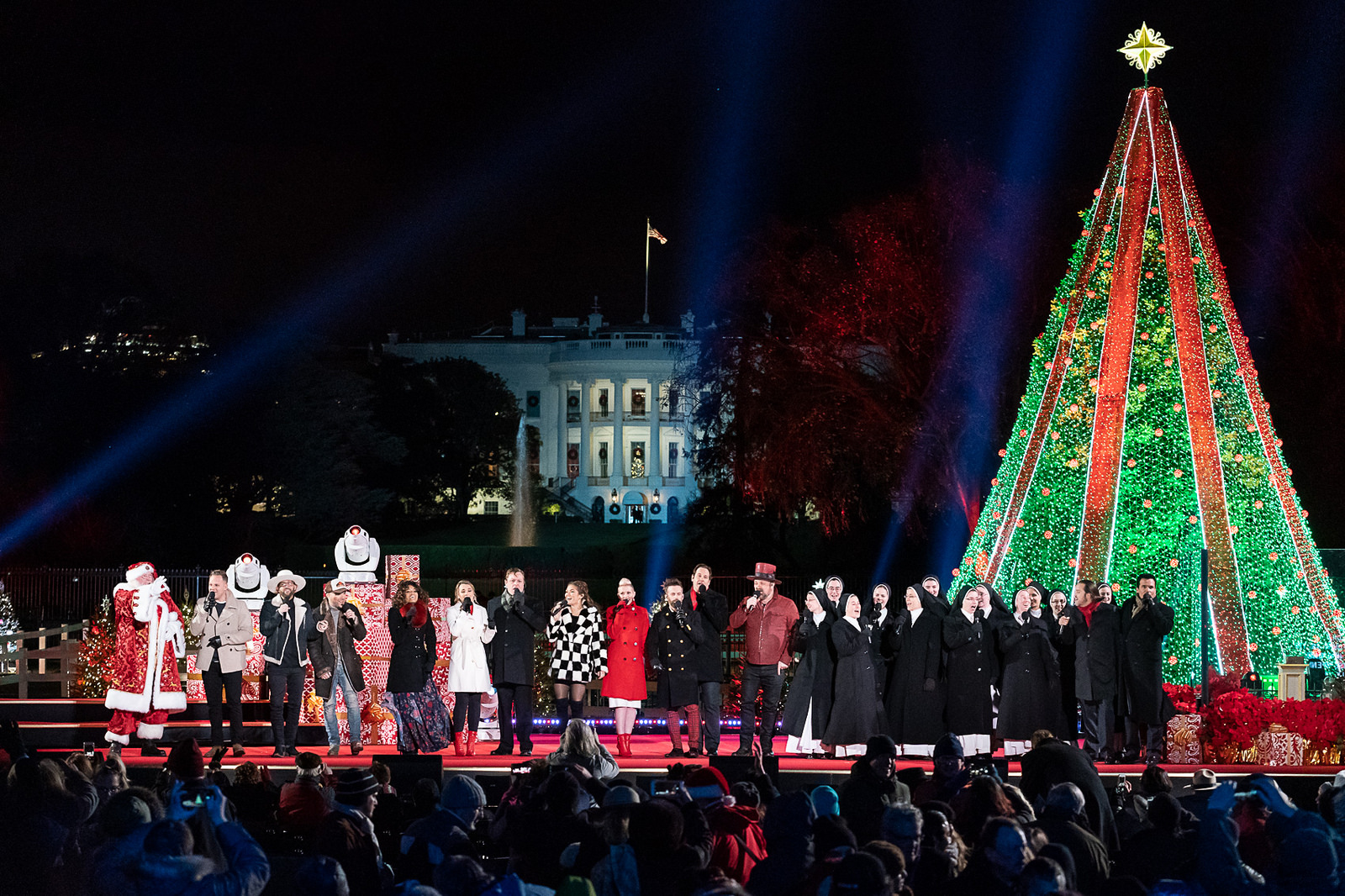O Christmas Tree
One of the most iconic images of the holiday season, Christmas trees, started as a German tradition and were introduced in the US by German settlers. Live Christmas trees have been sold commercially in the US since about 1850, and more than 30 million trees are sold between Thanksgiving and Christmas each year. Most of these trees are grown on more than 15,000 Christmas tree farms, covering 350 million acres across all 50 states. Oregon, North Carolina and Michigan are the top growers but even North Dakota has five Christmas tree growers, located in or near Cavalier, Hankinson, Minot, Carrington and Towner. In all but the Minot location, you can choose and cut your own tree!

Decorated Christmas Tree
The average price of a live cut Christmas tree is about $45, depending on size and species. The most popular trees are:
- Scotch pine – pleasant fragrance, excellent needle retention and branches stiff enough to hold heavy ornaments. Eastern white pine has soft, long needles, but retention is not as good as Scotch pine and the branches are very flexible – not the best for holding heavy ornaments.
- Fraser fir – very pleasant fragrance, best needle retention, with bright green flat needles that are white on the underside. Branches not quite as stiff as Scotch pine. Balsam fir has similar qualities but needles do not last quite as long.
- Spruce – this is the most commonly grown Christmas tree in North Dakota, including both Colorado blue spruce and Black Hills (white) spruce. Branches are stiff and will support heavy ornaments, but needles are quick to fall – this tree will likely last only a couple of weeks.
Right before placing a live tree inside, cut off the bottom inch of the trunk to open the pores that transport water through the tree. Place the tree in a sturdy stand that holds at least 2 to 4 quarts of water. A tree will use 1 quart of water per day for every inch trunk diameter at the base. Fill the stand and always keep water in it, so the tree’s pores remain active and needles can remain on the tree throughout the holidays. Home remedies such as aspirin, sugar, soft drinks and vodka do not increase the life of the tree and might even be harmful to pets that may drink from the stand.
Some prefer a live tree for its pleasant fragrance, the experience of picking out the tree and the option to recycle the tree after Christmas for a winter bird feeder or mulch. However, more than 60 million homes use artificial trees. The first artificial trees were also of German origin, made using goose feathers dyed green and attached to wire branches. In the 1930’s, green brush bristles were used and the 1960s brought us shiny aluminum trees! A great compromise is to purchase a nice quality artificial tree for convenience, and deck the halls with live boughs for a woodsy aroma. Happy Holidays!

The lighting of the National Christmas Tree has been a tradition for 96 years, started by President Calvin Coolidge.
The 2018 tree is a living Colorado blue spruce transplanted in 1948 from Virginia to President’s Park, near the White House.
Gerri Makay
gerri.makay@ndsu.edu
Community Forestry Program Manager
ND Forest Service


